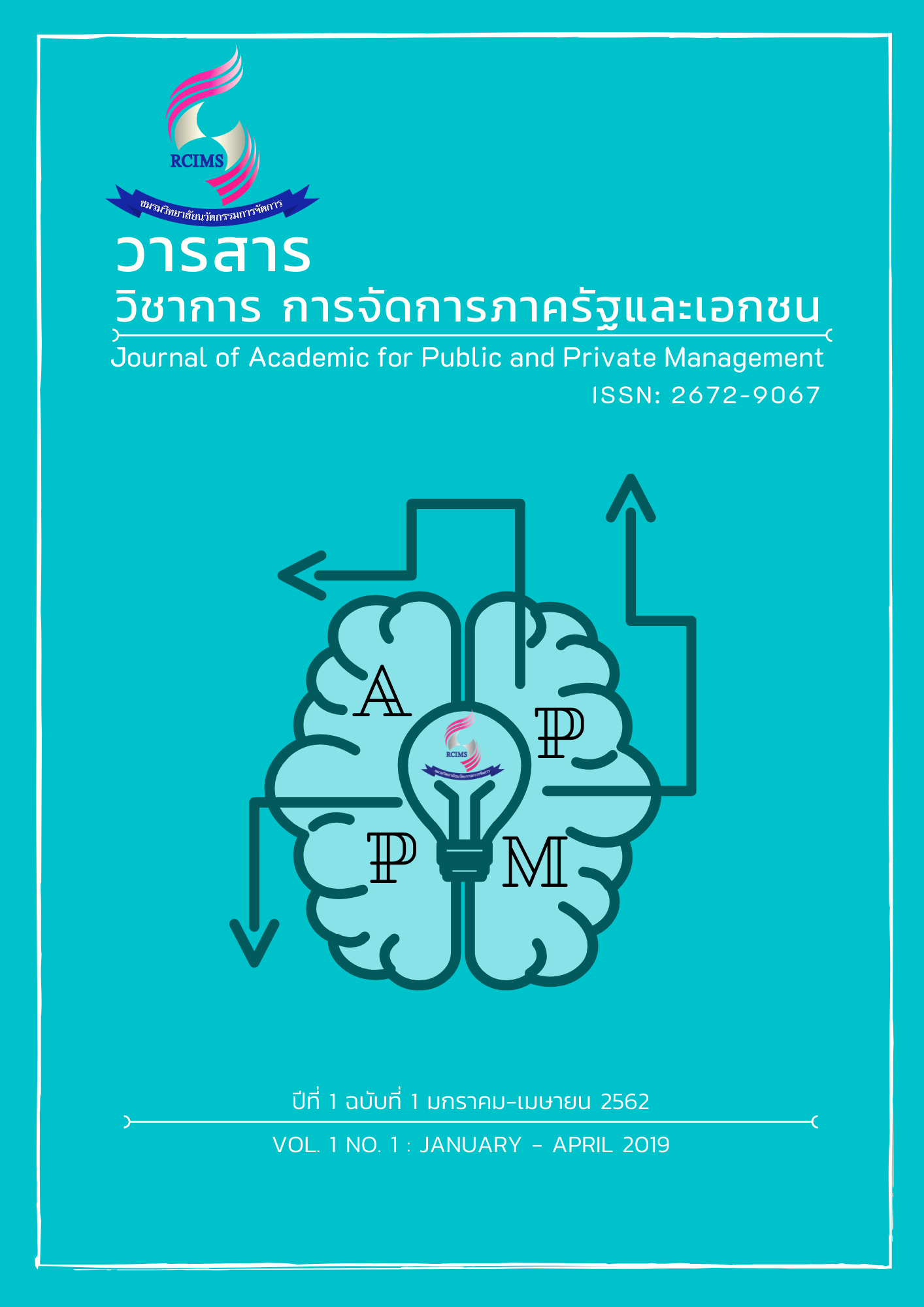การนำเสนอความคิดหลักที่ปรากฏในสุนทรพจน์ระเบิดนิวเคลียร์เพื่อสันติภาพและเหตุวินาศกรรม 911
Main Article Content
บทคัดย่อ
วัตถุประสงค์ของการศึกษานี้คือเพื่อประเมินลักษณะเฉพาะของสุนทรพจน์ของอดีตประธานาธิบดีแห่ง สหรัฐอเมริกาสองคน คือ ดไวท์ ดี ไอเซนฮาวร์ ในหัวข้อ “ระเบิดนิวเคลียร์เพื่อสันติภาพ” ในปี
พ.ศ. 2496 และ จอร์ช ดับเบิลยู บุช ในหัวข้อ “911” ในปี พ.ศ. 2544 ผ่านการใช้คำ โดยทั้งสองมีลักษณะร่วมกันในการใช้ประเด็นของ “เสรีภาพ” และ “สันติภาพ” กรอบแนวคิดที่ใช้คือแนวการวิเคราะห์กลุ่มคำและคำตรงข้าม ของเคนเน็ต เบิร์ก
การศึกษานี้เป็นงานวิจัยเชิงคุณภาพ โดยใช้กระบวนวิเคราะห์ตัวบททางวาทวิพากษ์ บทสุนทรพจน์ที่นำมาวิเคราะห์เป็นภาษาอังกฤษในรูปแบบของการบันทึกเสียงและตัวบทภาษาเขียน มีการเผยแพร่สาธารณะบนอินเตอร์เน็ท <http://www.americanrhetoric.com>
ผลการศึกษาพบว่า ในสุนทรพจน์ของ ไอเซนฮาวร์ มีการใช้คำด้านบวกจำนวน 10 คำ ในการสนับสนุนคำฝ่ายธรรมะ คำว่า“สันติภาพ”เป็นคำแสดงความคิดหลัก และมีคำฝ่ายอธรรม “ความกลัว” เป็นคู่ตรงข้ามของคำว่า “สันติภาพ” แต่ไม่ปรากฏคำด้านลบ ในขณะที่ ในสุนทรพจน์ของบุช มีการใช้คำด้านบวกจำนวน 7 คำ ในการสนับสนุนคำฝ่าย ธรรมะมี“เสรีภาพ”เป็นคำแสดงความคิดหลัก และในด้านลบหรือคำฝ่ายอธรรมจำนวน 6 คำ มีคำว่า “(การ/ผู้)ก่อการร้าย” เป็นคำแสดงความคิดหลักและถือเป็นคู่ตรงข้ามของคำว่า“เสรีภาพ”
Article Details

อนุญาตภายใต้เงื่อนไข Creative Commons Attribution-NonCommercial-NoDerivatives 4.0 International License.
เอกสารอ้างอิง
ทินวัฒน์ มฤคพิทักษ์. (2525). พูดได้พูดเป็น. พิมพ์ครั้งที่ 2. กรุงเทพฯ: บพิธการพิมพ์.
ราชบัณฑิตยสถาน. (2554). พจนานุกรมฉบับราชบัณฑิตยสถาน พ.ศ.2554 เฉลิมพระเกียรติพระบาทสมเด็จพระเจ้าอยู่หัว เนื่องในโอกาสพระราชพิธีมหามงคลเฉลิมพระชนมพรรษา 7 รอบ 5 ธันวาคม 2554. กรุงเทพฯ: ราชบัณฑิตยสถาน.
อัญชลี ถิระเนตร. (2543). กลวิธีการสื่อสารเพื่อโน้มน้าวใจในหลักคำสอนของพระพุทธเจ้า (วิทยานิพนธ์มหาบัณฑิต). จุฬาลงกรณ์มหาวิทยาลัย.
Berthold, C. A. (2009). Kenneth Burkes cluster agon method: Its development and an application. Central States Speech Journal, 27(4), 302-309. doi:10.1080/10510977609367908
Burke, K. (1950). A rhetoric of motives. Berkeley, CA: Univ. of California Press.
Burke, K. (1966). Language as symbolic action. Saratoga Springs, NY: Empire State College, State University of New York.
Burke, K. (1984). Attitudes toward history. Berkeley: University of California Press.
Burke, K. (1990). The Philosophy of literary form. Berkeley: University of California Press.
Cosmin-Constantin, B., & Claudia, C. E. (2015). Rhetorical critics role and mission in communication. Procedia - Social and Behavioral Sciences, 197, 167-174. doi:10.1016/j.sbspro.2015.07.078
Davison, L. J. (2004). Kenneth Burke's cluster-agon method as a tool for rhetorical analysis of presidential addresses (Unpublished master's thesis). University of Houston. Retrieved April 20, 2019, from https://www.researchgate.net/publication/323487024_Kenneth_Burke's_ Cluster- Agon_Method_as_a_Tool_for_Rhetorical_Analysis_of_Presidential_Addresses
Eidenmuller, M. E. (2017). Atoms for Peace. Retrieved March 13, 2019, from https://www.ameri canrhetoric.com/speeches/dwightdeisenhoweratomsforpeace.html
Eidenmuller, M. E. (2018) George W. Bush Address to Joint Session of Congress Following 9/11 Attacks. Retrieved March 13, 2019, from https://www.americanrhetoric.com/speeches/ dwightdeisenhoweratomsforpeace.html
Foss, S. K. (2018). Rhetorical criticism: Exploration and practice (5thed.). Long Grove, IL: Waveland Press.
Rhetoric. (n.d.). (2013). Merriam-Webster Online. In Merriam-Webster. Retrieved January 2, 2019, from http://www.merriam-webster.com/dictionary/citation
Rueckert, W. H. (1983). Kenneth Burke and the Drama of Human Relations. Berkeley: U of California Press.
Saenla, S., & Rojjanaprapayon, R. (2015). A Neo-aristotelian criticism of Barack Obama’s rhetoric in the state of the union addresses of 2010-2014. NIDA Journal of Language and Communication, 20(24), 38-62.
Zon, R. S. (2018). The effectiveness of language in speeches by Trump and Shakespeare. Retrieved January 2, 2019, from https://halshs.archives-ouvertes.fr/halshs-01835625
Windes, R. R. (1961). A study of effective and ineffective presidential campaign speaking. Speech Monographs, 28(1), 39-49. doi:10.1080/03637756109375309


